Fascinating photos of America in the Roaring Twenties
Exploring the roaring
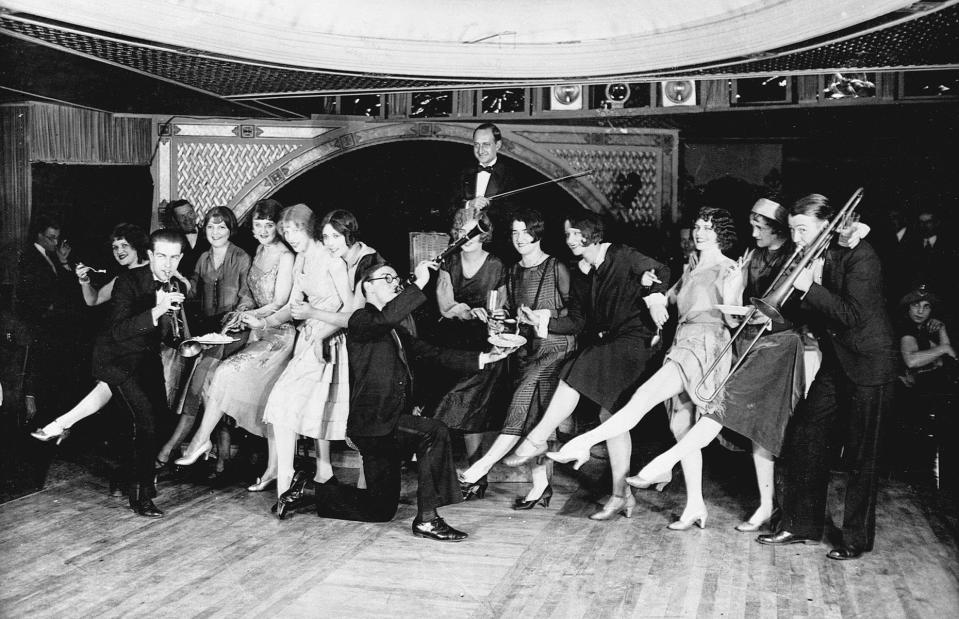
GRANGER - Historical Picture Archive/Alamy
Whether it's flappers and gangsters dancing the Charleston in Prohibition-era speakeasies, or the lavish mansions and automobiles of The Great Gatsby, few eras exert such an outsized influence on the American imagination as the 1920s. To modern eyes the Roaring Twenties seem like an oasis of optimism and prosperity between the catastrophes of the 1910s (the First World War; the Spanish flu pandemic) and the looming dread of the 1930s and its Great Depression. But how roaring were they really?
Read on to see incredible black-and-white images showing what the Twenties in the US were really like...
1920: The US census records 100 million Americans

GRANGER - Historical Picture Archive/Alamy
This unassuming image of two women chatting in a doorway hides a landmark moment in American history. The woman on the right works for the US census, and 1920 saw America's population officially pass 100 million for the first time – a symbolic footnote in a broader period of unparalleled growth and change that would make America the world's premier superpower.
The 1920s would bring a booming economy, the birth of American consumerism and a loosening of Victorian social values, but these also brought a backlash from those concerned about moral and social decay. The changes of the 1920s – and the reactions against them – still dominate how we see the decade.
1920: Prohibition begins
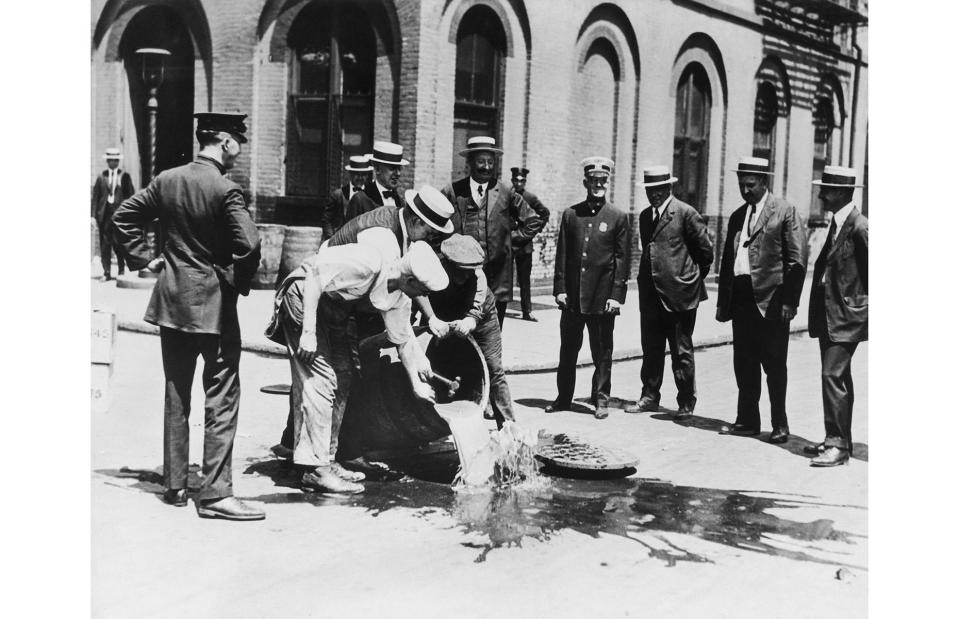
FPG/Hulton Archive/Getty Images
No topic better captures this sense of moral panic than Prohibition – the banning of recreational alcohol consumption that stretched from 1920 to 1933. Social and religious groups like the Temperance Movement had been trying to ban booze since the early 19th century – painting it as a social evil that caused crime, broke up families and was against the will of God – while some industrialists thought the ban would improve productivity.
Prohibition came into effect in January 1920, ushering in an era of bootlegging, speakeasies and police raids during which officers would often pour the contents of seized barrels into the sewers.
1920: The Lincoln Memorial is built
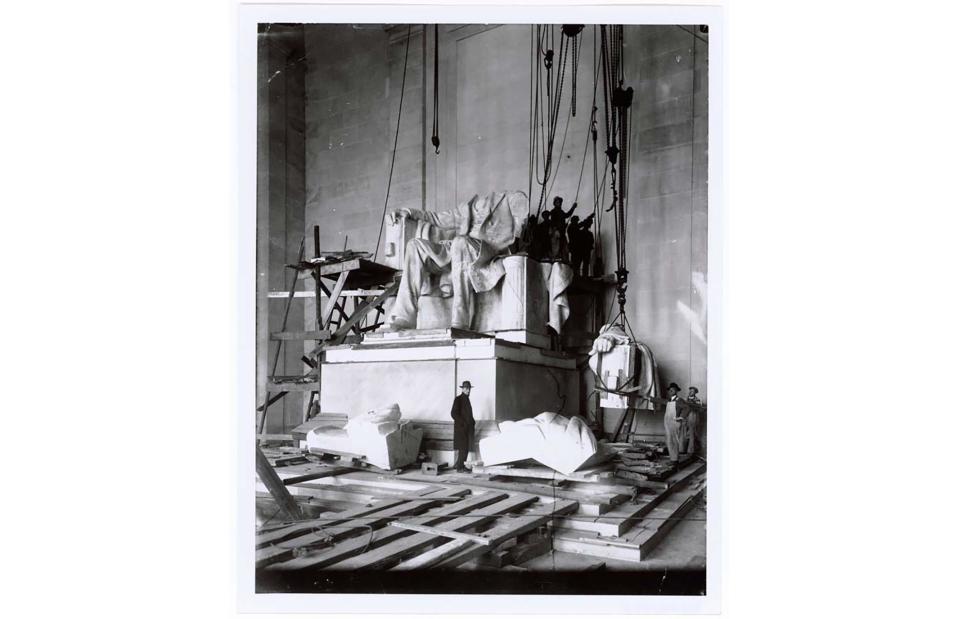
The U.S. National Archives/Wikimedia Commons/Public domain
America's interwar years are remembered as a golden age of big-ticket construction, as landmarks like the Chrysler Building (1928-1930), the Empire State Building (1930-1931) and the Golden Gate Bridge (1933-1937) sprang up at high speed thanks to enormous workforces, outrageously wealthy industrialists and lax health and safety regulations. But the early 1920s saw a very different sort of project: the Lincoln Memorial, dedicated in DC in 1922. In this 1920 photo, the headless Lincoln is just about to receive his left arm.
1920: Women win the right to vote
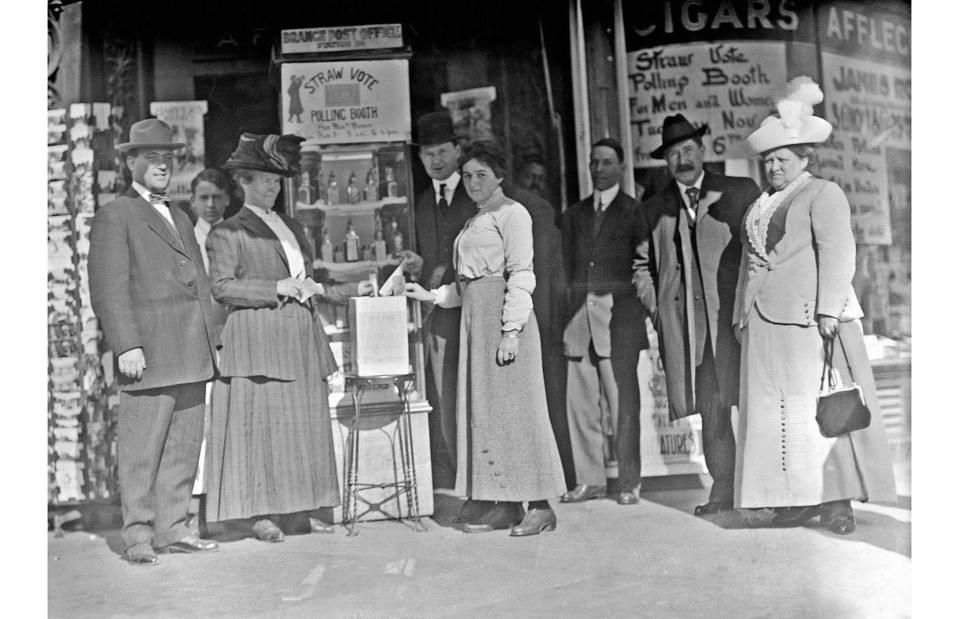
World History Archive/Alamy
The 18th August 1920 marked the end of a long, hard road for the women's suffrage movement. The 19th Amendment confirmed that "the right of citizens of the United States to vote shall not be denied ... on account of sex", and many women immediately exercised that right in the 1920 presidential election.
It was a close-run thing: the amendment passed serenely through the House and Senate but needed to be ratified by 36 states to become law. A single Tennessee representative cast the deciding vote; he was apparently convinced by his mother. For some women, the struggle continued, with some states using local laws to keep Black women out of the polling booth.
c.1921: Flappers are the talk of the town
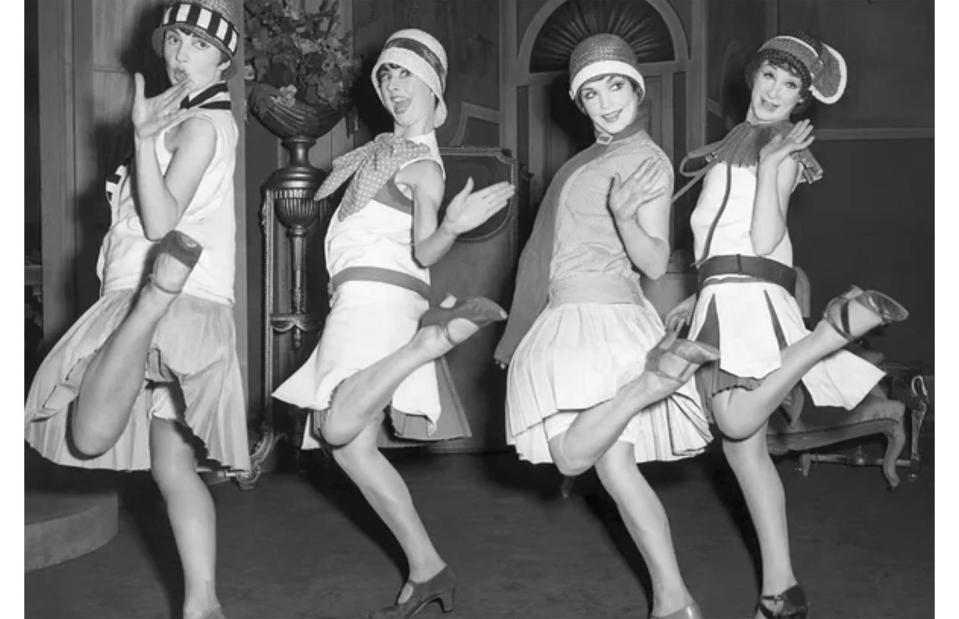
Pictorial Press Ltd/Alamy
Flappers are practically synonymous with the Roaring Twenties. Complete with a short 'bob' hairstyle, painted lips and a round cloche hat, the typical flapper was a young, confident, middle-class woman with stockings and a high hemline. They danced their way through urban jazz clubs, drank and smoked, and even enjoyed the company of young gentlemen.
As with hippies in the Sixties and punks in the Seventies, flappers were a minority, but they sufficiently scandalised the stuffier sections of society, due to their rejection of traditional societal constraints, that they remain a cultural icon a century on.
1921: The Tulsa Race Massacre

Oklahoma Historical Society/Getty Images
But while women's rights cantered forwards, the fight for racial justice stalled, and even shifted into reverse. The Tulsa Race Massacre in 1921 remains the worst race riot in US history – sparked by a sexual assault accusation against a young Black man who was released without charge the very next day.
Over the course of 18 hours, a white mob tore through the Greenwood area of Tulsa – an African-American neighbourhood with a thriving business district often dubbed 'Black Wall Street' – looting, burning and shooting. Greenwood was left a smouldering ruin – its school, library and hospital reduced to cinders – and up to 300 people lay dead.
c.1921: The revival of the Ku Klux Klan
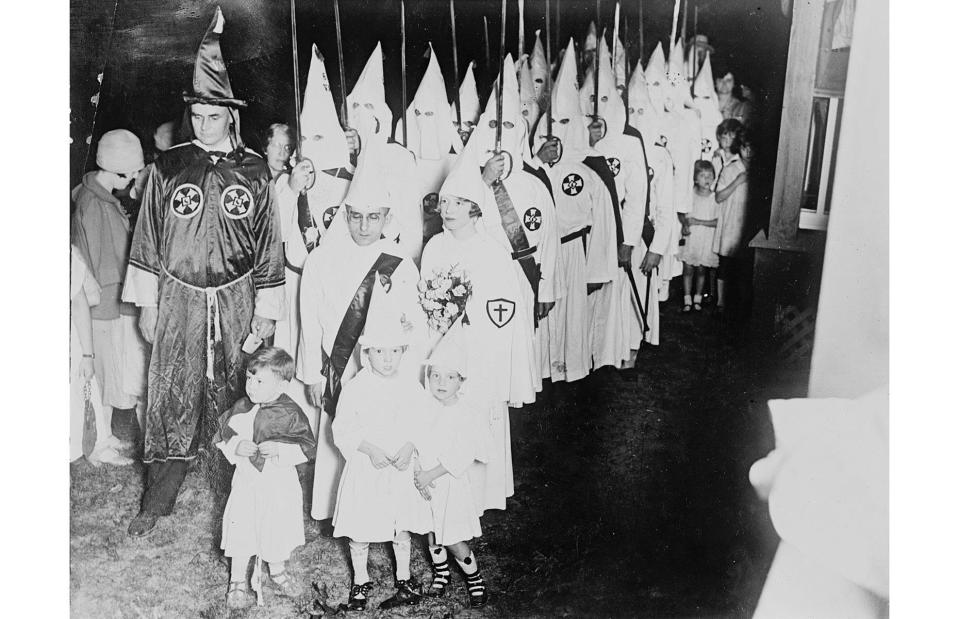
D and S Photography Archives/Alamy
For modern historians, the remarkable resurgence of the Ku Klux Klan is one of the most troubling trends of the era. The group started the decade with 100,000 members, but by the mid-1920s was at the peak of its powers with between two and five million.
With city slickers wheeling and dealing and women wearing skirts above the knee, the Klan managed to present itself not only as white supremacist, but also as a defender of traditional Protestant values being trampled by post-war liberalism and immigration. This new Klan targeted Jews and Catholics as well as African-Americans, but its aptitude for violence remained unchanged.
1921: The first Miss America is crowned in Atlantic City

Wikimedia Commons/Public domain
At just 16 years old, Margaret Gorman would be too young to enter a modern Miss America pageant. But in 1921 she won first prize in the inaugural Inter-City Beauty Contest – a pageant held on the beach in Atlantic City that began as a ploy to keep tourists in the city after Labor Day.
Gorman looked strikingly similar to popular actress Mary Pickford, and was awarded a golden mermaid statue and a hundred dollars. Though beaming in all the photos, Gorman said in later life that the pageant had left her cold: "I never cared to be Miss America. It wasn't my idea. I am so bored by it all. I really want to forget the whole thing."
1923: Radio takes off
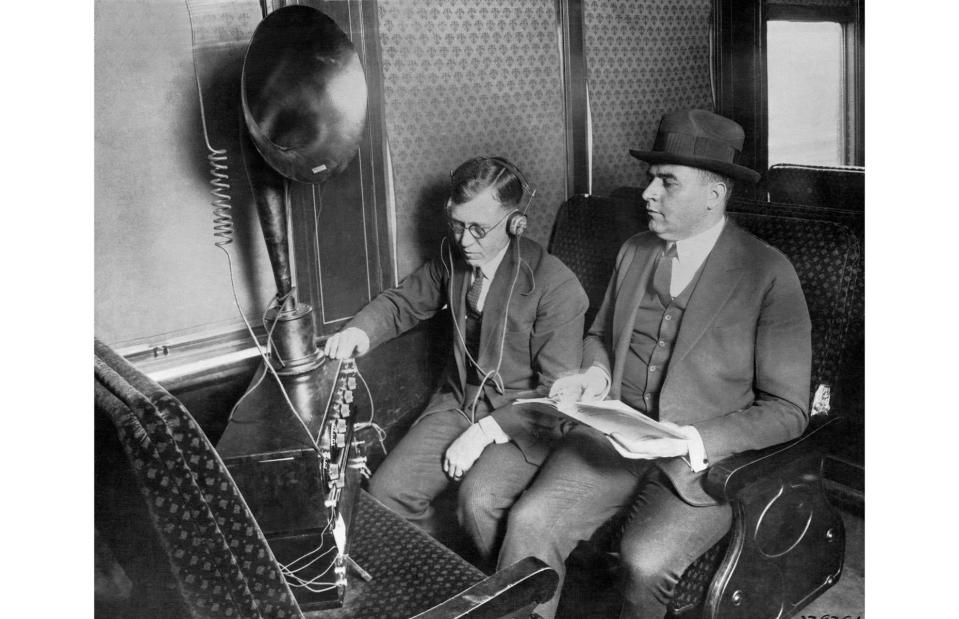
Underwood Archives Inc/Alamy
The 1920s was a decade of innovation – but it was also a decade when previous innovations came to the fore. Step forward: the radio. Invented in the late-19th century, the radio spent the Twenties slowly inserting itself into the American home. The country's first commercial station went live in 1920; Warren G Harding became the first president to address the nation via radio in 1922; and by the end of the decade there were radios in more than 12 million American households.
In this 1923 image, train passengers in Ohio listen to a railroad radio for the very first time – the device is equipped with special speakers that allow travellers to hear above the noise of the train.
1924: Calvin Coolidge is elected
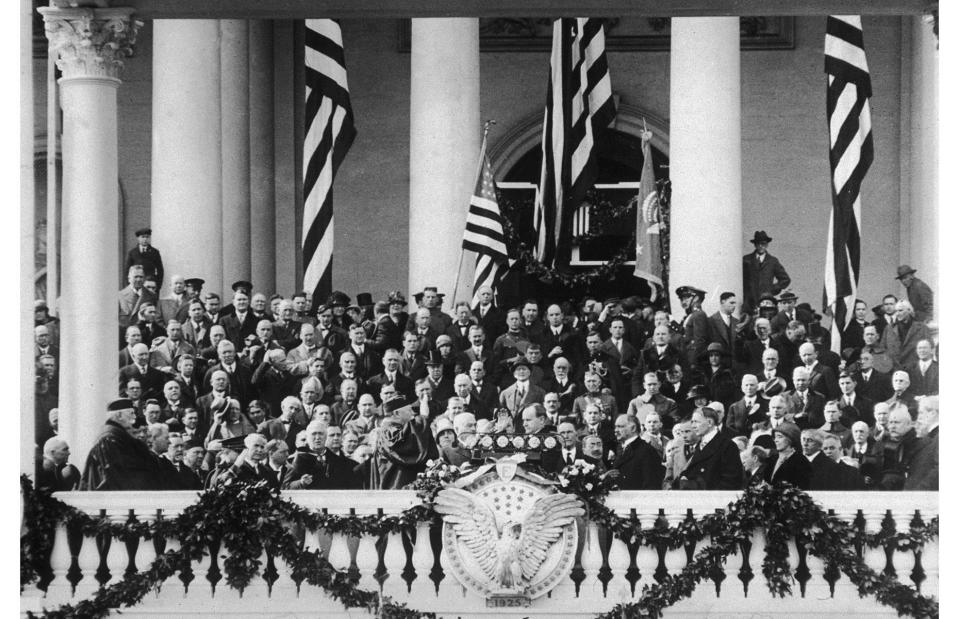
New York Times Co./Getty Images
The 1920s saw four US presidents: Woodrow Wilson, Warren G Harding, Calvin Coolidge and Herbert Hoover. The only Democrat of the decade, Wilson suffered a stroke in 1919 and was in the twilight of his presidency when the Twenties began. Harding won a crushing victory in the 1920 presidential election but died of a heart attack in 1923. He was replaced by his VP Calvin Coolidge, a small-government enthusiast who then won the 1924 election – he's seen here swearing the oath of office at his inauguration.
Herbert Hoover succeeded him and oversaw another electoral landslide in 1928, but is now known almost solely for his inaction during the Great Depression.
1924: The National Origins Act
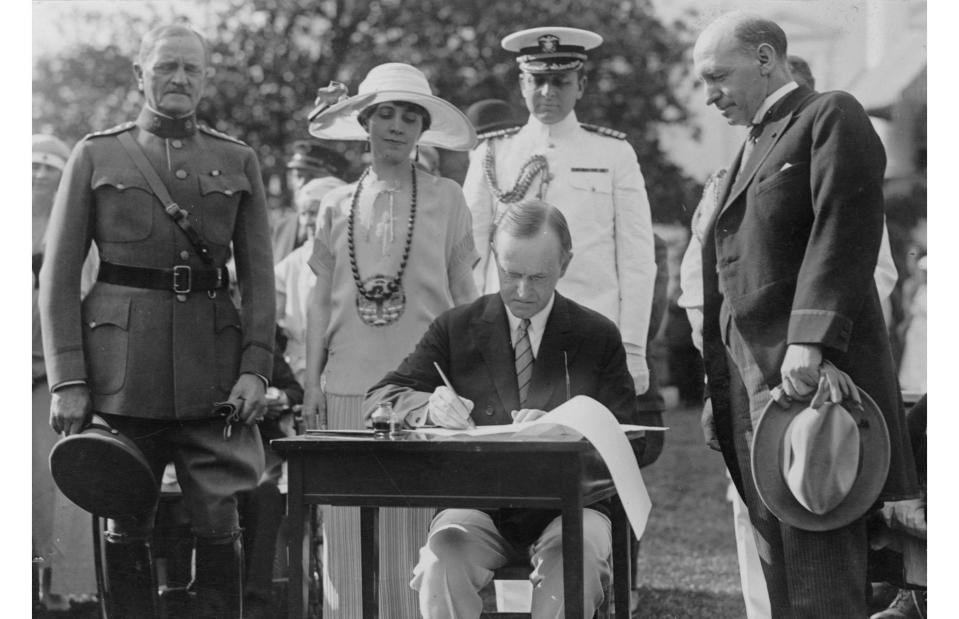
National Photo Company Collection/Wikimedia Commons/Public domain
The United States has long been a nation of immigrants, and between 1836 and 1914, 30 million Europeans made the voyage across the Atlantic, arriving at Ellis Island in search of jobs, land, religious freedom and the American dream. But in the early 20th century public opinion began to turn; there was mistrust of Catholics, post-war anti-German sentiment, anti-communist suspicion, prejudice against non-European ethnicities and fear about the limits of the job market.
In this image, President Coolidge signs into law the notorious 1924 National Origins Act, which set draconian caps on immigration that disadvantaged 'undesirable' nationalities and effectively outlawed arrivals from Asia.
1925: A surging economy
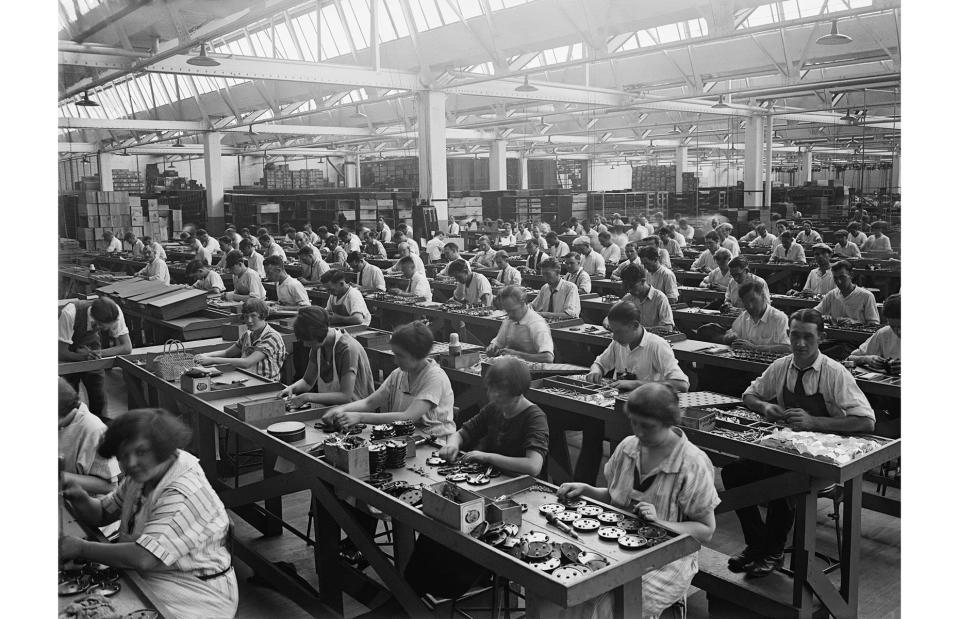
Everett Collection Historical/Alamy
America in the 1920s boasted a financial report card that would widen the eyes of any modern treasury official. The Gross National Product grew from $78 billion to $103 billion across the decade, while the number of people paying taxes on one-million-dollar incomes rose almost eightfold. Unemployment dropped from 11.9 million in 1921 to 3.2 million in early 1929, while the number of women in work rose 25%.
America owed these advances in part to a manufacturing boom that saw thousands of jobs appear on factory assembly lines. This photo shows a mixed workforce assembling condensers at the Atwater Kent Factory in Philadelphia – the largest manufacturer of radios in the country.
c.1925: The birth of the American consumer
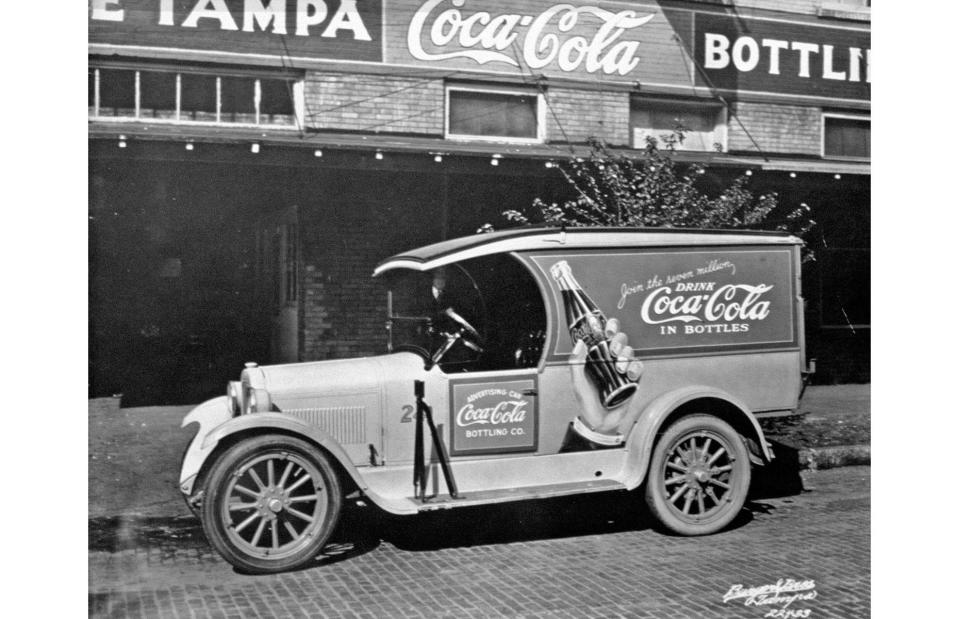
Classic Picture Library/Alamy
Production-line manufacturing meant lower prices, and a thriving economy meant a general public that could buy, buy, buy. Overall demand for goods rose by 20% in the 1920s, causing department stores and advertising hoardings to spring up across the nation, flogging everything from luxury handkerchiefs to powdered milk.
1920s America is often dubbed the first modern consumerist society, but there wasn't enough to go round. 60% of the population remained below the poverty line, and farmers, Black Americans, immigrants and working-class women in particular remained on the margins of this brave new capitalist world.
c.1925: The automobile becomes America's transport of choice
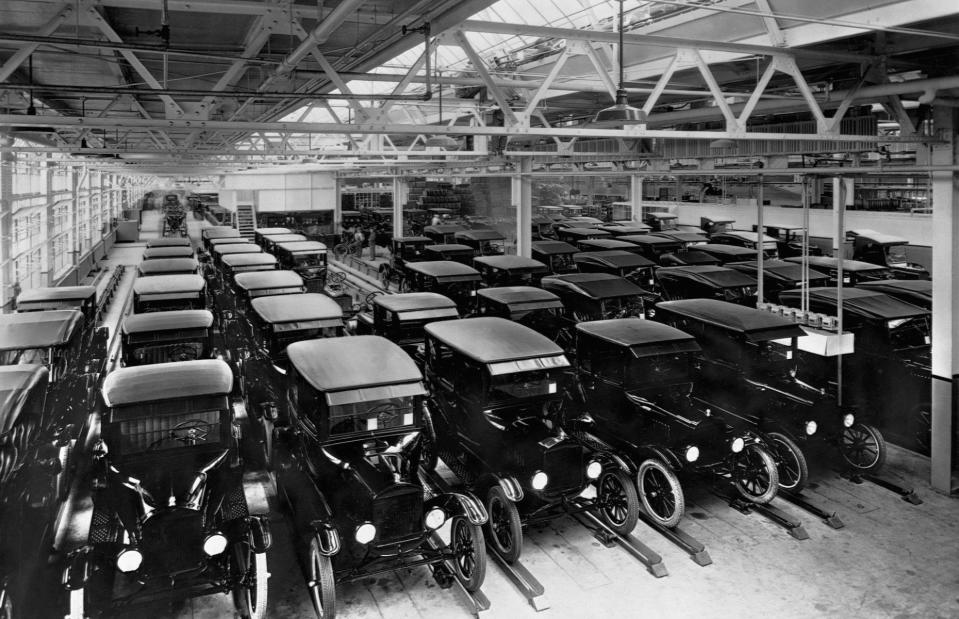
Bettmann/Getty Images
It's hard to call the 1920s the age of the car – because in America the entire 20th and 21st centuries have been the age of the car – but the 1920s was perhaps the decade when car ownership became mainstream. The mass-produced Ford Model T (pictured) retailed at $260 by 1924 (around $4,767/£3,726 in today's money), turning automobiles from luxury items into affordable consumer products.
The number of registered drivers in America almost tripled through the decade, and this came with an entire road economy of gas stations, oil refineries and motels. By 1929 there was one car on American roads for every five Americans – roughly 23 million vehicles.
c.1925: Electrifying America
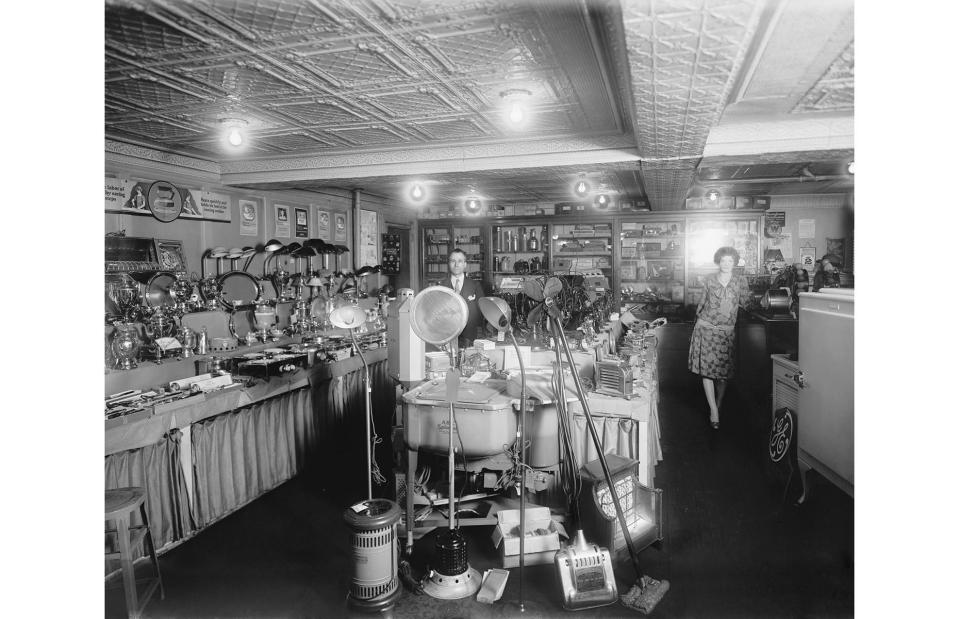
Everett Collection Historical/Alamy
Skyscrapers, nightlife and car ownership: it's often said that the 1920s helped make America modern. So if you need reminding of how different the Twenties were from today, remember that just a decade earlier in 1912, only 16% of US households had electricity. The electrification of America was one of the most important social transformations of the era – and enabled many of the others. This cheap, efficient energy source powered the biggest factories to the smallest home appliances, and by 1929 it flowed through 70% of American homes.
c.1925: Home appliances are big business
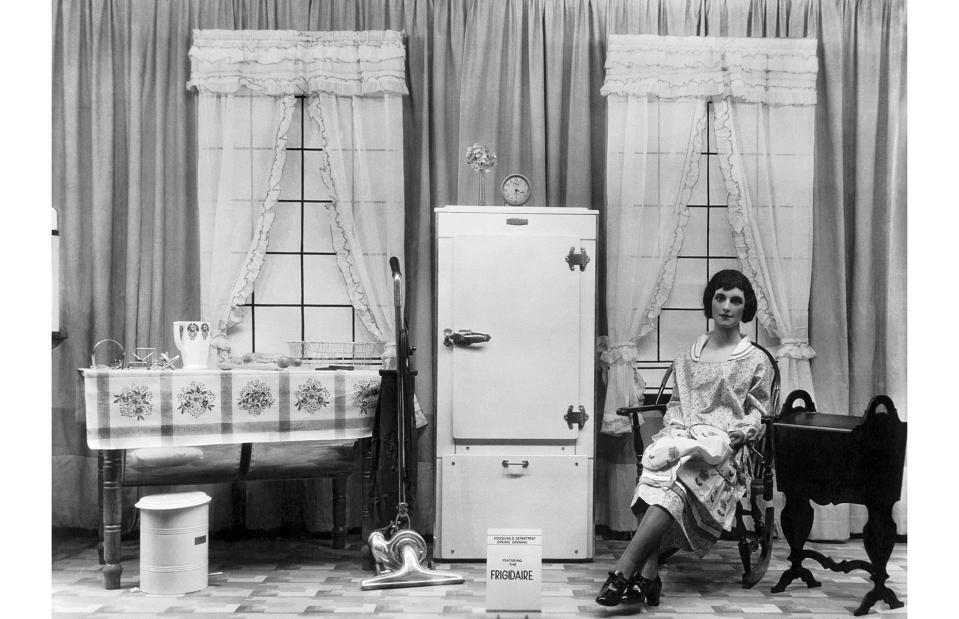
Underwood Archives Inc/Alamy
Home appliances became a crucial emerging market, and shop windows reliably filled with the latest domestic aids. Electric refrigerators became a department store staple – and with them frozen food – while new-fangled washing machines and vacuum cleaners flew off the shelves. Technology had never been more accessible, and electric shavers, spin dryers and phonographs (early record players) were all mass-produced. 'Paying in installments' was a feature of the 1920s, and, after the horrors of the First World War, many families felt that life was too short to save.
1925: The Scopes Monkey Trial
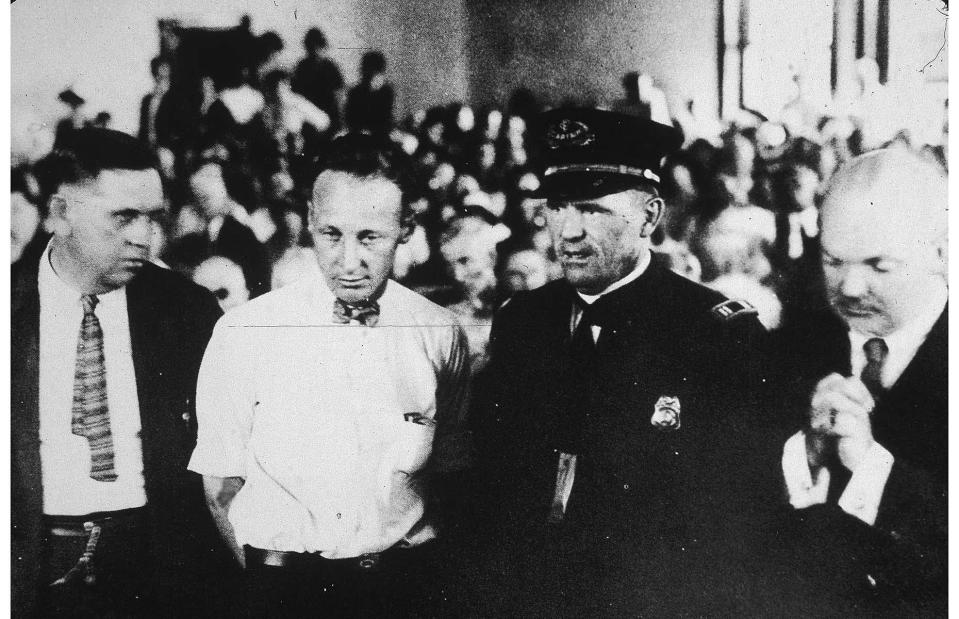
Hulton Archive/Getty Images
In 1925, the Tennessee state legislature made it illegal to "teach any theory that denies the story of the Divine Creation of man as taught in the Bible, and teach instead that man has descended from a lower order of animals". A rejection of the theory of evolution, the law was promptly broken by high school science teacher John Scopes who wanted to test it in court.
Both sides recruited celebrity lawyers and the trial attracted feverish media attention, while an exhibit featuring a chimpanzee in a suit opened outside the courthouse. Amid high drama, Scopes was found guilty, but the prosecution was publicly humiliated during cross-examination and the verdict was overturned two years later.
1926: The Jazz Age and the Charleston
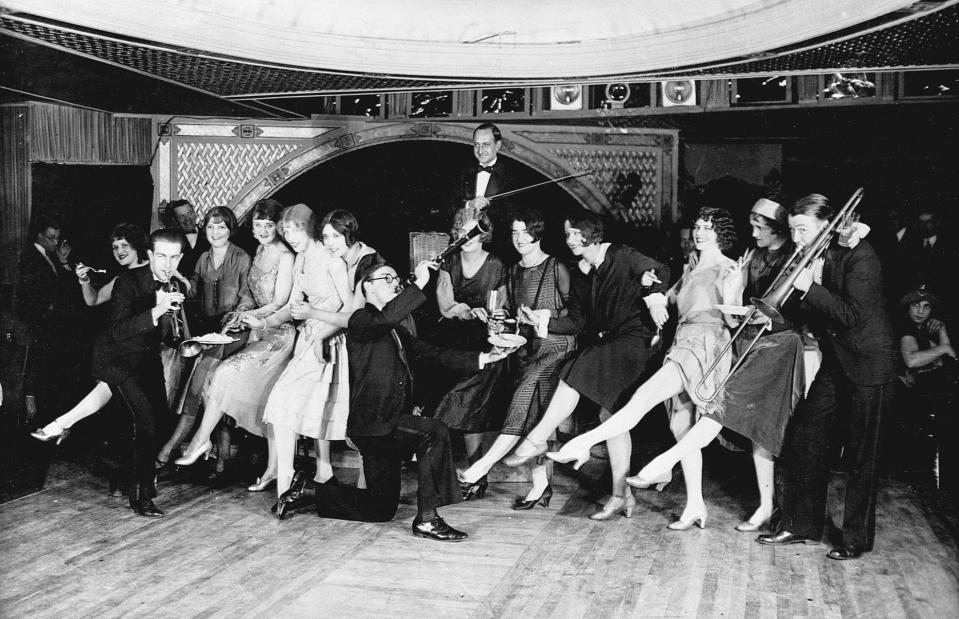
Bettmann/Getty Images
The phrase 'The Jazz Age' is often used synonymously with the 1920s – and jazz clubs did indeed spring up in most American downtowns. This new genre, pioneered by Black musicians from the South, was accompanied by new dances including the exuberant Charleston, characterised by rapid arm and leg movement.
Jazz clubs were considered of low moral standing by social conservatives. "The music is sensuous, the embracing of partners – the female only half dressed – absolutely indecent", read a report in the Cincinnati Catholic Telegraph. "And the motions – they are such as may not be described ... in a family newspaper."
c.1926: The Jazz Age and F Scott Fitzgerald
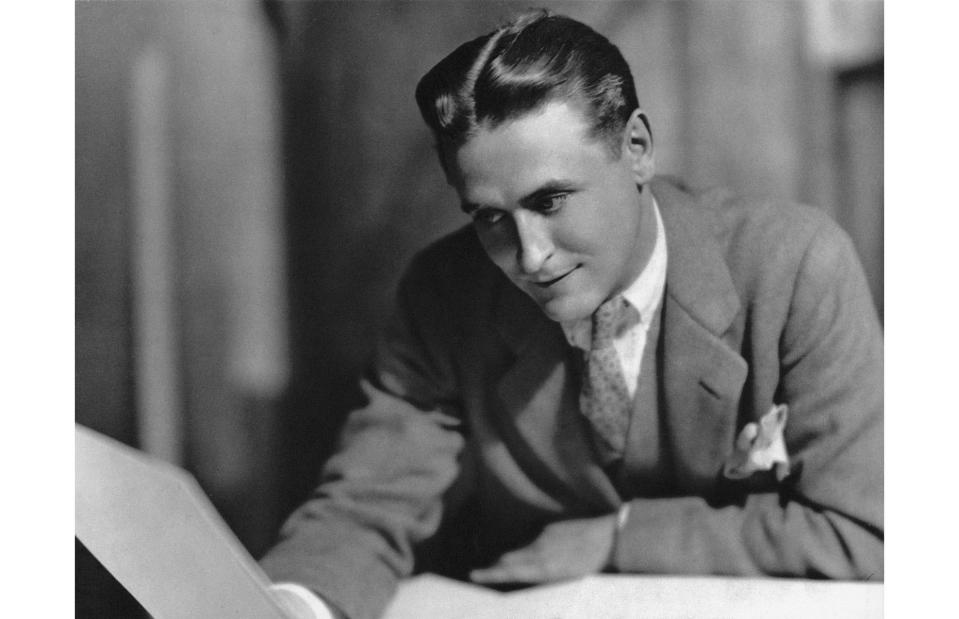
GRANGER - Historical Picture Archive/Alamy
No figure is more associated with the Jazz Age than modernist writer F Scott Fitzgerald – pictured here by photographer Nickolas Muray around 1926 – whose collection of short stories, Tales of the Jazz Age, popularised the term in 1922. His 1925 release The Great Gatsby sharply satirises the perceived cynicism, excess and moral vacuity of the era's leisure class, and has since become one of the great American novels.
c.1927: Speakeasies spark an underground economy
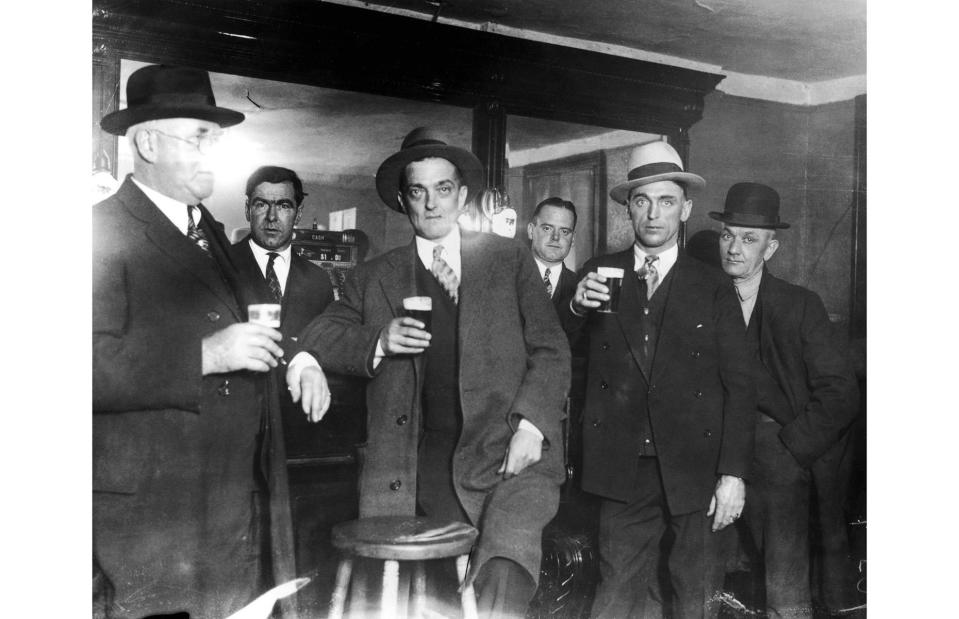
GRANGER - Historical Picture Archive/Alamy
The word 'speakeasy' did exist before the 1920s, but we owe its continued usage almost entirely to the decade. When Prohibition forced alcohol consumption underground – in many cases literally – secret saloons and clandestine drinking clubs started serving illicit liquor behind locked and guarded doors. These became known as 'speakeasies', perhaps because patrons could talk with looser tongues or perhaps because they entered these establishments by whispering through peepholes.
Among white middle-class Prohibitionists beer was sometimes called 'Kaiser brew', a nod to the 1920s belief that banning alcohol would control immigrant populations in the cities.
1927: Organised crime becomes more organised
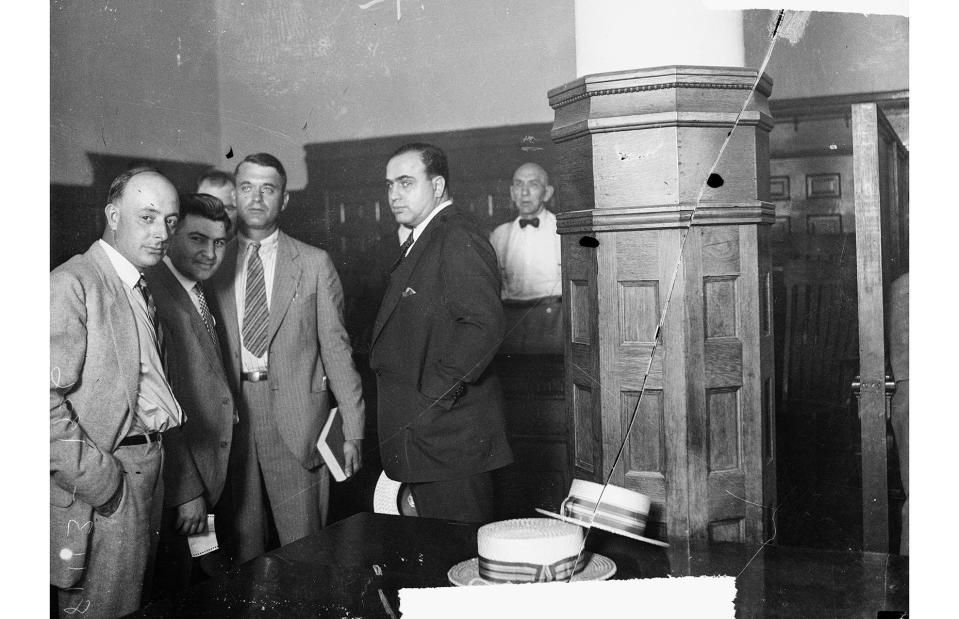
Chicago Sun-Times/Chicago Daily News collection/Chicago History Museum/Getty Images
The Untouchables, Road to Perdition, Bugsy Malone – Prohibition gave us some all-time great gangster movies, but in the 1920s the rise of organised crime was all too real. Speakeasies needed suppliers, and bootlegging helped make crime bosses like Al Capone, pictured here in a black suit in 1927, into millionaires.
Gambling, prostitution, narcotics, bribery, robbery, protection rackets and murder rounded out his roll call of misdeeds, and at one point he reportedly had half Chicago's police force on his payroll. Gang violence in the city peaked with 1929's St Valentine's Day Massacre – the execution-style killing of seven men loyal to George 'Bugs' Moran, a rival of Capone's.
1927: The Great Mississippi Flood

Science History Images/Alamy
Natural disasters do not care about culture or the economy, and America had one of its worst in the spring of 1927. Months of heavy rainfall caused the Mississippi River to overwhelm its flood defences, sending unfathomable quantities of water spilling across 11 states. 27,000 square miles (70,000sq km) of land was suddenly submerged, and at its widest point near Vicksburg, Missouri, the river stretched 80 miles (128km) across.
More than 700,000 were left homeless and the damage stood at $400 million – that's $5 billion/£3.9bn today. The US has had deadlier disasters – the death toll stood at roughly 250 – but for sheer destruction, the Great Mississippi Flood stands almost alone.
1927: Charles Lindbergh flies across the Atlantic
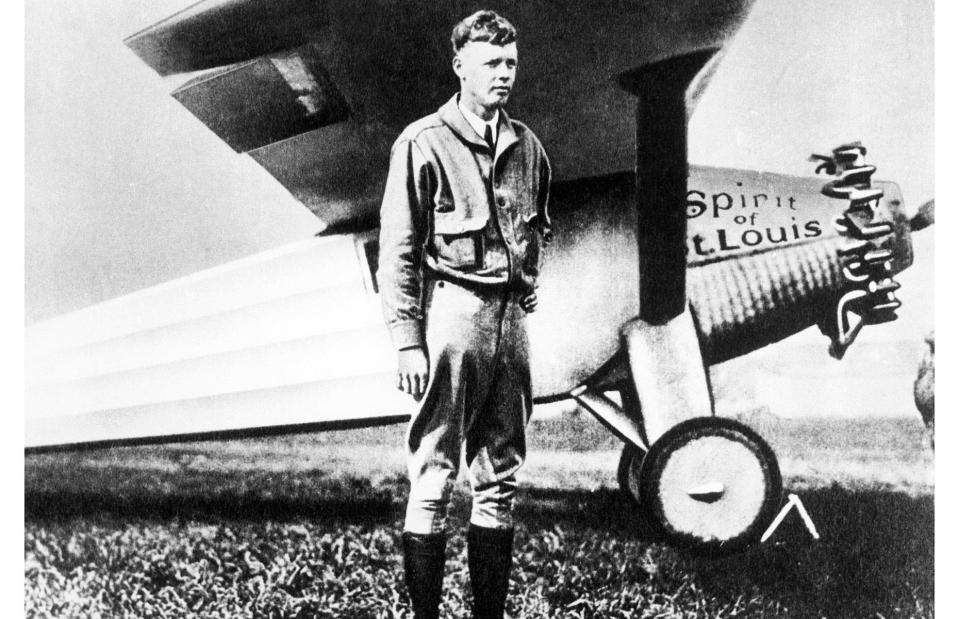
Science History Images/Alamy
We're starting to lose count of the number of 'social transformations' the Twenties oversaw, but the rise of civil aviation is another one to throw on the pile. Twenty-five-year-old Charles Lindbergh briefly became the face of flying when he crossed the Atlantic solo in his plucky single-engine monoplane Spirit of St Louis in 1927 – the first person to do so.
He was mobbed by large crowds when he touched down in Paris and quickly became a folk hero on both sides of the ocean – just as America's earliest airports were marking out their runways. In 1926, fewer than 6,000 people boarded a plane in the United States; in 1929 that number was 173,000.
c.1927: Work begins on Mount Rushmore
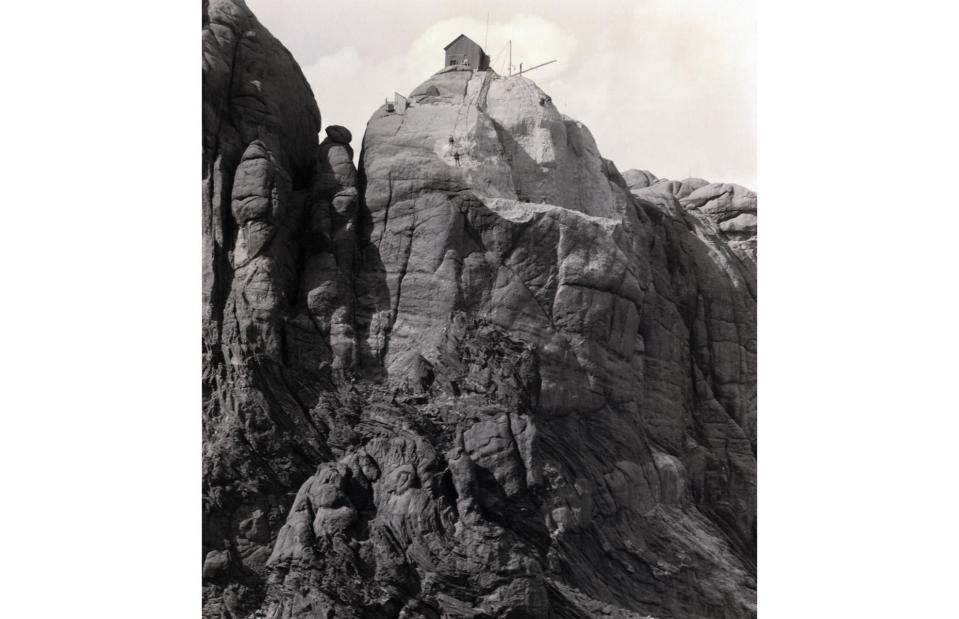
George Rinhart/Corbis via Getty Images
Mount Rushmore is now one of America's best-known tourist attractions – which means it's done its job well, because a tourist attraction is what it was always meant to be. Dreamed up by South Dakota state historian Doane Robinson as a way of drawing people to the under-visited state, the giant granite faces were meant to depict heroes of the Old West, including Native Americans, but the project's lead sculptor argued successfully for presidents instead.
George Washington's head was dedicated in 1930, Thomas Jefferson's in 1936, Abraham Lincoln's in 1937 and Theodore Roosevelt's in 1939. The Lakota Sioux people view the monument as a desecration of their ancestral lands and heritage and protest it to this day.
1928: Walt Disney, Mickey Mouse and Oswald the Lucky Rabbit
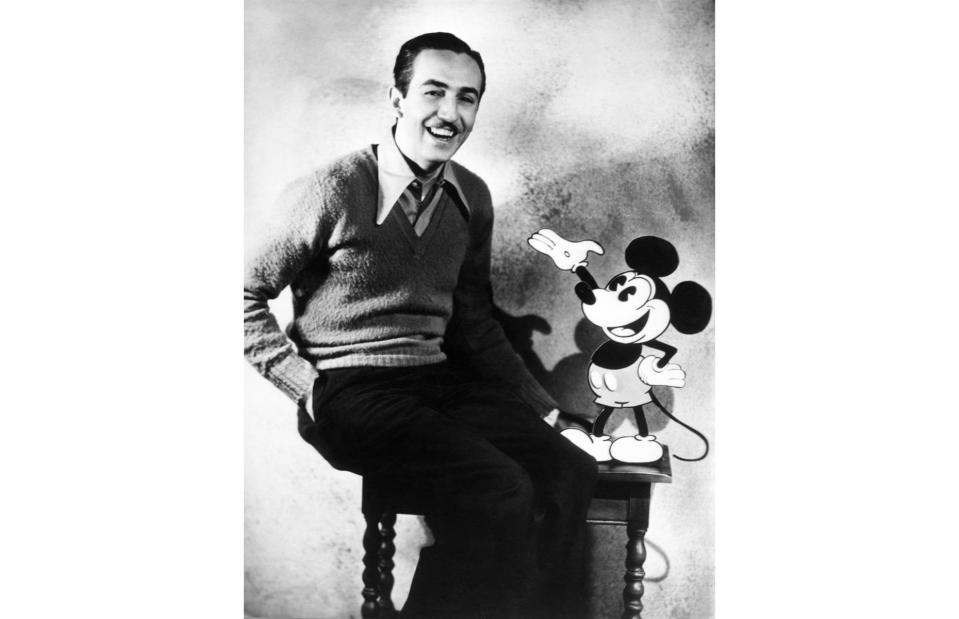
Album/Alamy
"I only hope," said Walt Disney in an interview in 1954, "that we never lose sight of one thing – that it was all started by a mouse." It was a nice sentiment, and in line with Disney's friendly underdog image, but it wasn't strictly true. The House of Mouse was technically founded by a rabbit – Oswald the Lucky Rabbit to be precise, who became Disney's first cartoon critter when he hit screens in 1927.
Mickey Mouse had his first full release with Steamboat Willie in 1928, a landmark piece of animation innovation that took audiences by storm, and has been Disney's mascot and protagonist ever since.
1928: Everyone goes to the movies
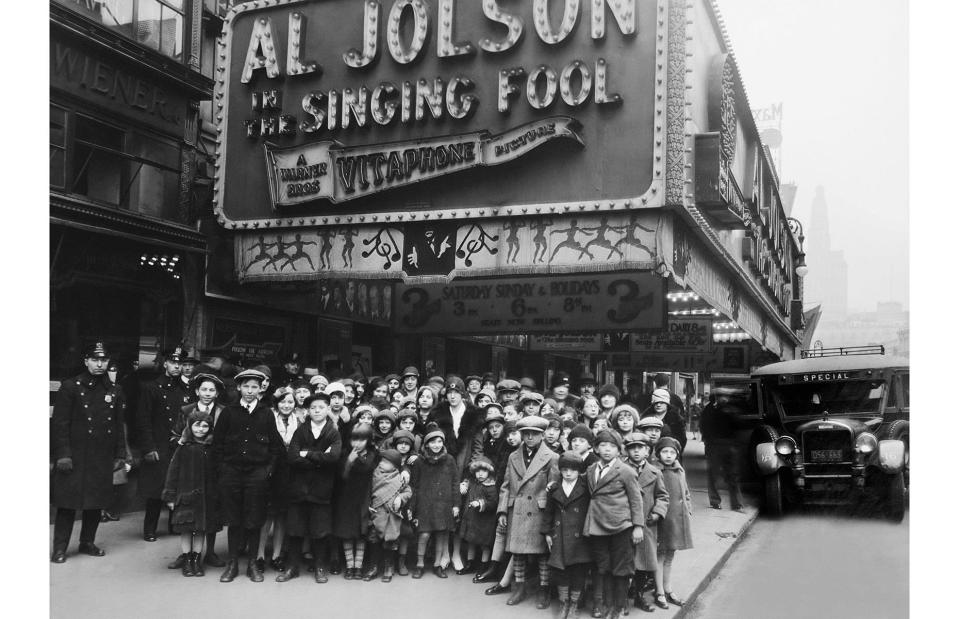
Everett Collection Inc/Alamy
No single moment marks the beginning of Hollywood's Golden Age, but most experts agree it started in the late 1920s, as the silent era ended and movie theatres became a staple of everyday American life. 1927's The Jazz Singer is sometimes cited – an extremely of-its-time film starring Al Jolson as a travelling jazz performer. It was one of the first movies to feature truly synchronised music and speech.
The film has a difficult legacy today, thanks to its extensive use of blackface. By the end of the 1920s, historians estimate that three-quarters of Americans visited a cinema every week, and performers like Charlie Chaplin and Gloria Swanson became the first Hollywood celebrities.
1929: The Oscars begin
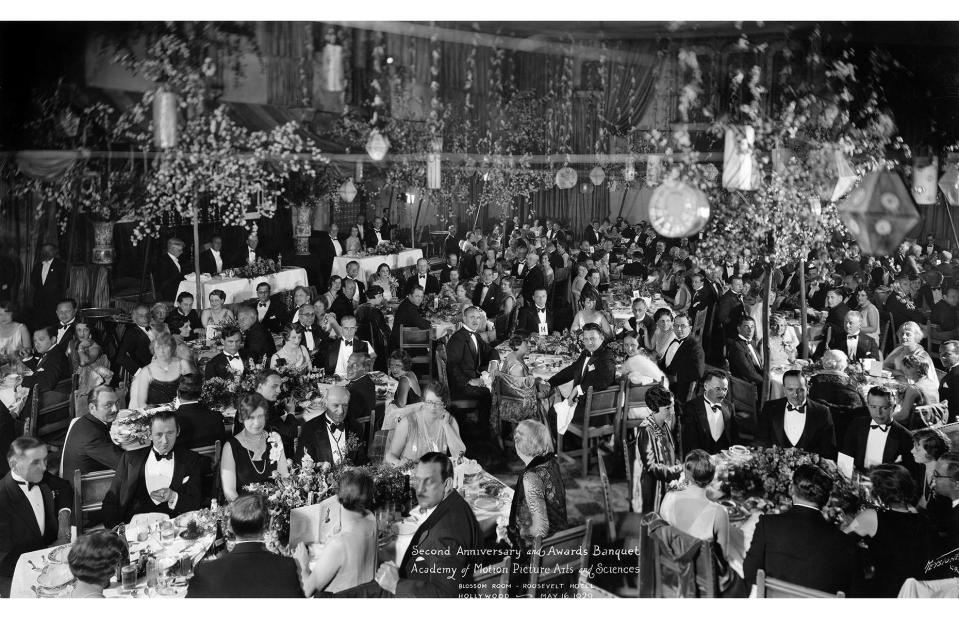
Wikimedia Commons/Public domain
Tuxedos and cocktail dresses perched around circular tables in a lavishly-decorated LA ballroom – it could almost be the modern Oscars. The 1st Academy Awards ceremony was held in the Blossom Room at Hollywood's Roosevelt Hotel in 1929 – several years before the 'Oscars' nickname was first used. Wings won best picture – a drama about First World War pilots trapped in a love triangle – while Janet Gaynor was named best actress for three different movies, Seventh Heaven, Street Angel and Sunrise. The champagne flowed freely, the sauteed sole fillet served was delectable and, best of all, the entire ceremony lasted about 15 minutes.
1929: Art Deco takes Manhattan
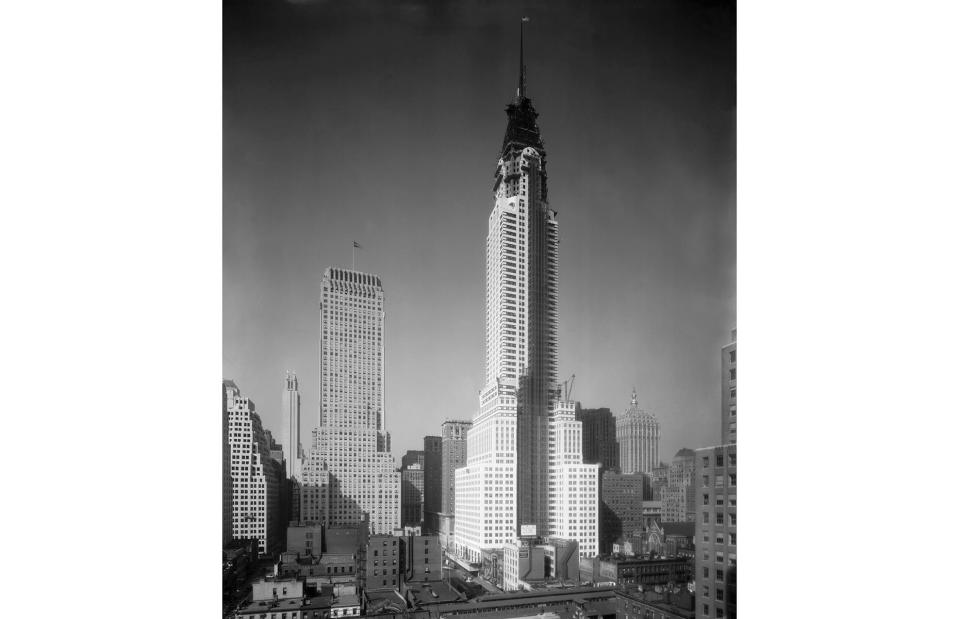
Bettmann/Getty Images
As modernism swept the world of writing and movie audiences were wowed by 'talkies', another artistic movement was dominating the designs of architects on both coasts. The phrase 'Art Deco' was coined in the 1960s, but is now widely used for the elegant, geometric patterns and styles that emerged in Paris in the mid-1920s and reached America by the time the decade was done.
The Chrysler Building in Manhattan – seen here unfinished in 1929 – is a textbook example, and was briefly the tallest building in the world. Art Deco became even more dominant in the early 1930s; see the Empire State Building, the Rockefeller Center and the Eastern Columbia Building in Los Angeles.
1929: The Wall Street Crash
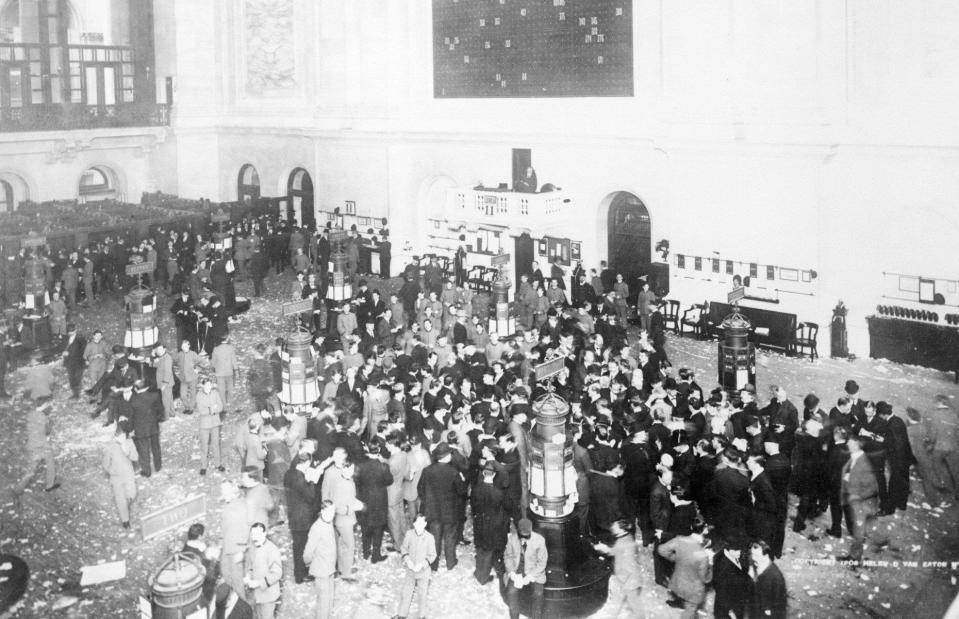
Bettmann/Getty Images
Few people saw the Wall Street Crash coming. The roaring-ness of the 1920s led Wall Street investors – and ordinary punters with access to easy credit – to speculate wildly on the financial markets, taking on debts and pouring savings into stocks generating seemingly guaranteed profits.
In October 1929, the house of cards finally fell. 'Black Thursday' saw the panicked selling of nearly 13 million shares in a single day, while the ensuing 'Black Monday' and 'Black Tuesday' were little better. Billions were wiped off the stock market, hundreds of thousands of businesses closed and tens of millions were plunged into poverty. It was the start of the worst economic crisis the US has ever known.
1929: The Great Depression begins
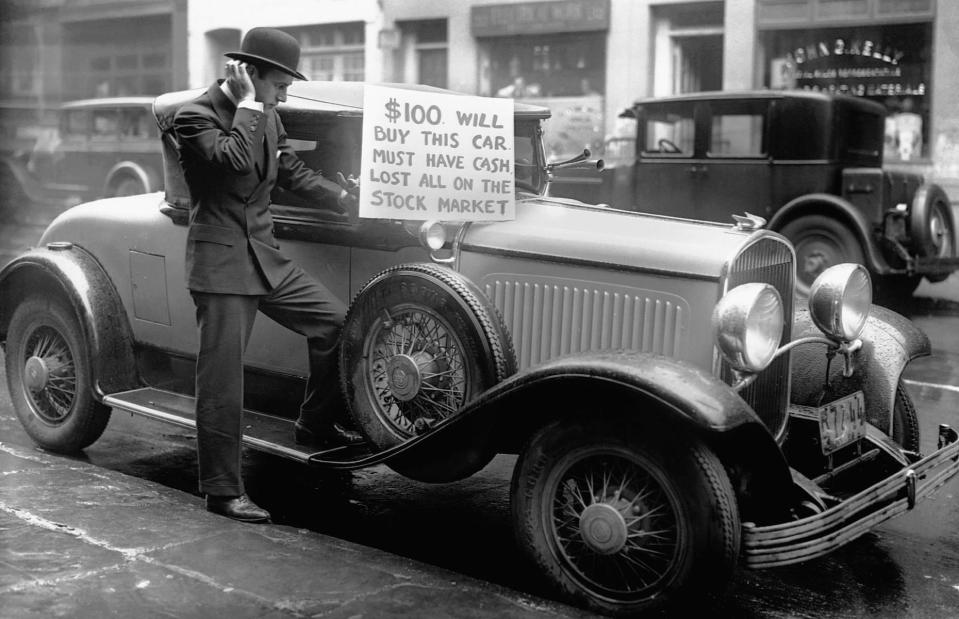
Bettmann/Getty Images
When the 1920s ended, they really ended. There would be nothing roaring about the Thirties – a decade that started with economic disaster and ended with the Second World War. As bank after bank shuttered in New York, leaving millions penniless in what would soon be called the Great Depression, an even greater storm was brewing in the prairies to the west; a period of drought and agricultural catastrophe known as the Dust Bowl. For a lot of people, the Twenties weren't actually that roaring. But they were much more roaring than what followed.
Now discover these fascinating images from the Great Depression


